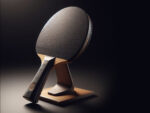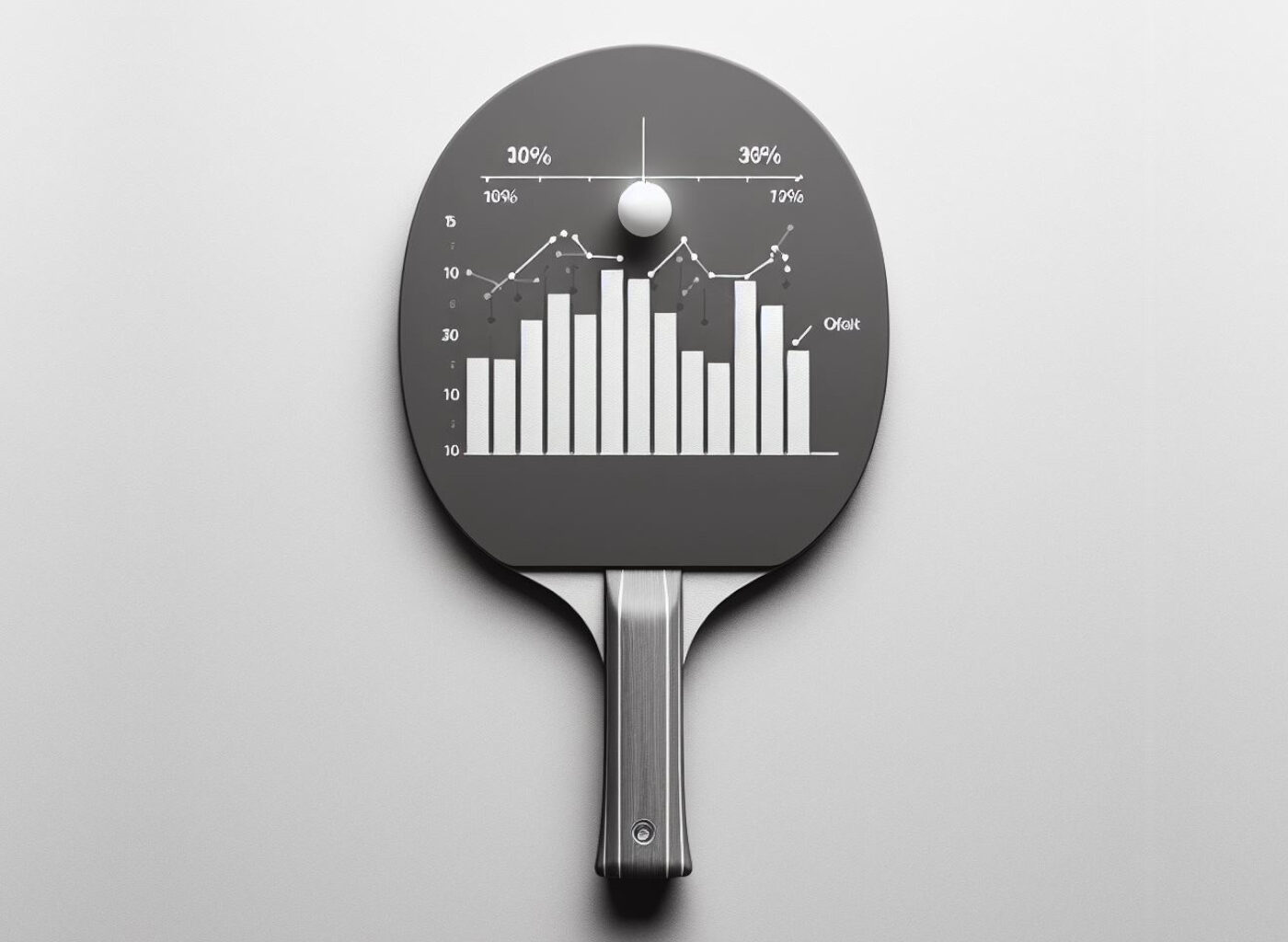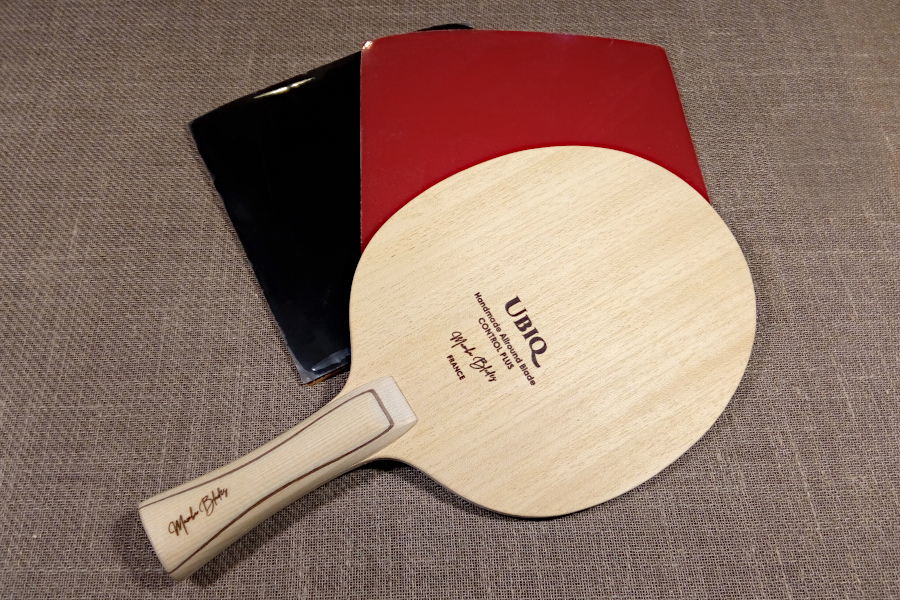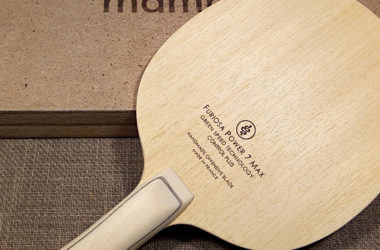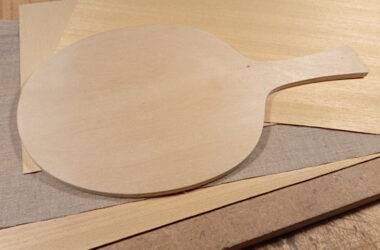

The Table Tennis Racket: Key to Sporting Excellence
At the crossroads of strategy, technical skill, and the art of the game, table tennis requires perfect harmony between the player and his equipment. At the heart of this harmony, the table tennis racket plays a fundamental role. As an essential performance tool, it embodies the soul of the game, the extension of the player’s will, and the key to success. This racket, made up of multiple elements and subtle nuances, is much more than a simple accessory. It also embodies the potential, technique, and creativity of the player. It thus influences the control, speed, rotation and precision of shots. So, this article will look at the importance of the performance of a table tennis racket. We will also explore the key components of this equipment, the determining factors, and the considerable impact it has on the player’s performance.
The Key Components of a Table Tennis Racket
The table tennis racket, a true extension of the player on the court, is a complex instrument which is made up of several essential elements. Each one plays a crucial role in their performance. To understand in depth the impact of these performances on the game, it is essential to dissect the key elements that make it up. In this chapter, we will explore these fundamental elements and their contribution to a player’s success.
The Pallet
The pallet is the main part of the racket, where the player hits the ball. It is generally made of wood, although composite versions can also be found. The choice of wood is a crucial decision, as it largely determines speed, control and playing feel. The stiffness, density and quality of the wood vary depending on the blade, directly influencing how the ball reacts upon impact.
The rubbers
Rubber coatings are applied to both sides of the pallet. They are responsible for the interaction between the racket and the ball. The rubber surface plays a major role in the ability to generate spin and control the trajectory of the ball. Several rubber characteristics, such as hardness, thickness, texture, and rubber quality, have a significant impact on speed, spin, and shot control.
The Handle
We often neglect the handle of the racket, but it is essential for a comfortable and efficient grip. Then, its shape, size and texture are key elements to ensure that the player can handle the racket optimally. A handle well suited to the player’s hand promotes better coordination and increased responsiveness.
In short, these key components of the table tennis racket are much more than just pieces of equipment. They embody the essence of the game, dictating how the player interacts with the ball and the control they exert over each shot. Each of these elements offers room for customization and adaptation that allows players to choose their ideal configuration based on their playing style and preferences.
Factors That Affect Table Tennis Racket Performance
The performance of a table tennis racket depends not only on its components, but also on a series of interrelated factors that converge to create a subtle balance between control, speed and spin. These factors play a vital role in customizing the racket according to the player’s playing style. In this chapter, we will explore the main factors that influence racket performance.
Style of Play
The player’s playing style is a predominant factor that guides all racquet decisions. Offensive players will favor faster rackets to attack with speed and put pressure on their opponents. On the other hand, defensive players will opt for rackets offering superior control to return opposing shots with precision. Versatile players will look to balance control and speed to adapt to different playing situations.
The Composition of the Palette
The pallet is generally made from various types of wood or composite materials. Each type of wood has its own characteristics of rigidity, density and flexibility. This directly influences the control and speed of the racket. The choice of palette composition must adapt to the player’s playing style.
Rubber Coatings
Rubber coatings are available in a multitude of designs. They therefore offer varying levels of hardness, thickness, texture and rotation capacity. Players must therefore select rubbers according to their level of play, their style of play, and their personal preferences. Harder surfaces will generate more speed. And conversely, softer coatings will promote better grip and greater rotation capacity.
Rubber coatings thickness
The thickness of the rubber coatings plays an important role in the speed and spin of shots. Thinner rubbers generally provide better control, while thicker rubbers provide more power. Experienced players often opt for thinner rubbers for optimal control.
Personalization
Experienced players have the option to further customize their racket by adjusting parameters such as scale, overall weight and racket balance. These adjustments allow you to create a tailor-made racket that precisely meets the player’s needs.
Table tennis racket performance is profoundly influenced by a series of factors, all interconnected. Understanding these factors and factoring them into racket selection and customization is essential to enable players to optimize their game and achieve a higher level of mastery. The next chapter will examine the impact of this performance on the game itself.
The Impact of Table Tennis Racket Performance on the Game
Table tennis racket performance is not simply a technical characteristic, but rather a dynamic element that significantly shapes a player’s experience and results on the court. This section will explore the impact of racket performance on the game and demonstrate how racket performance is crucial to success in table tennis.
Precision and Control
A well-balanced racket suited to a player’s playing style provides an exceptional level of precision. The ability to control the trajectory and direction of the ball is essential to mastering rallies and winning points. The rubber coatings, the rigidity of the blade, and the overall configuration of the racket allow the player to play precise shots, block opposing attacks and impose his strategy on the game.
Speed and Power
Speed is a key element in table tennis, especially for offensive players. An offensive racket can generate fast and powerful shots, providing an advantage when attacking. Rubber covers, blade composition, and cover thickness directly influence ball speed. Players who prioritize speed can adjust their racket accordingly to achieve better performance.
Rotation and Unpredictability
The ability to generate spin on the ball is a major asset in table tennis. Rubber coverings play a vital role in creating this rotation. Indeed, they allow the player to achieve confusing effects and impose an unpredictable game on the opponent. Rotation can cause errors in the opponent and confer a considerable tactical advantage.
Adaptability to the Game
A high-performance table tennis racket is a versatile instrument that can adapt to different playing situations. Players can adjust their playstyle depending on their opponent and game conditions. A well-designed racket allows you to properly apply your shots and strategies, offering greater flexibility on the court.
The table tennis racket is much more than just a tool. It becomes an extension of the player himself. It directly influences performance and results on the field. So choices regarding palette, rubbers, and other customization factors determine how a player approaches each match. Ultimately, to be successful in table tennis, it is essential to recognize the importance of these performances. You still have to find the perfect balance between the different elements that make up the racket.
The Table Tennis Racket: The Art of Control and Performance
Through this exploration of the performance of a table tennis racket, we have highlighted the crucial importance of this equipment in the practice of this demanding sport. Thus, the racket, composed of its paddle, its rubber coverings, its handle, and various customizable elements, embodies the soul of the game and the direct link between the player and the ball.
Thus, each component significantly influences the control, speed, rotation, power and precision of shots. Additionally, we explored the factors that influence racket performance. These are the style of play, the composition, the coatings, their thickness, and its customization. These elements interact to create a balance to be adjusted according to the player’s needs and preferences.
Finally, we highlighted the impact of racket performance on the game itself. A well-designed racket tailored to the player allows for superior precision and control. But we can also count on increased speed and power, rotation and better adaptability. It thus becomes a versatile tool for the player, a strategic asset and a means of imposing their own vision of the game.
In short, the table tennis racket is an essential element that transcends the simple notion of sports equipment. It becomes a reflection of the player’s skills, preferences and playing style. When chosen carefully, it becomes a key to sporting excellence in table tennis. Likewise, it offers the possibility of reaching new heights of performance, strategy and creativity.
Featured image : Image by Mamba Blades “The Performance of a Table Tennis Racket“


